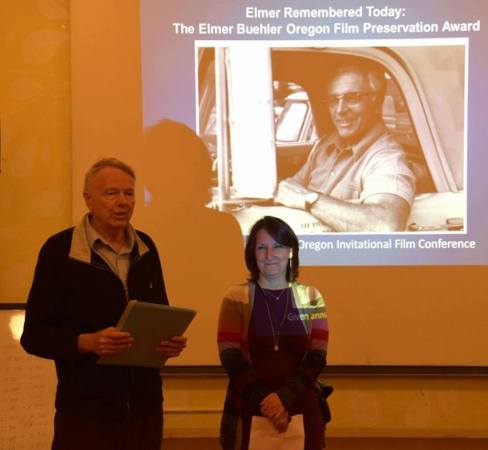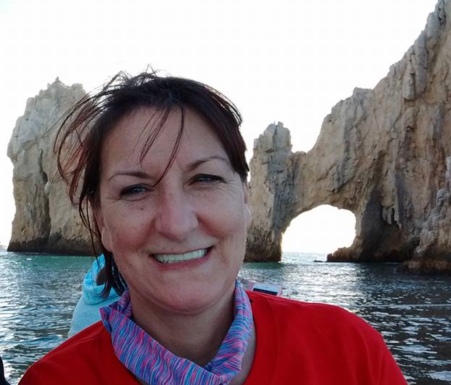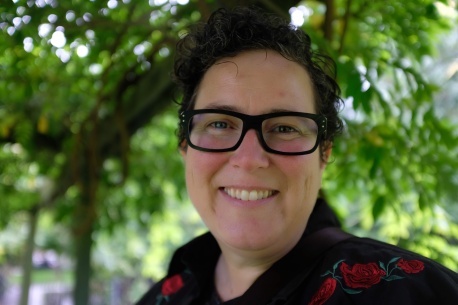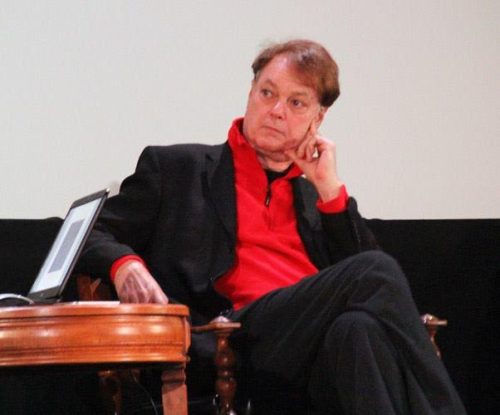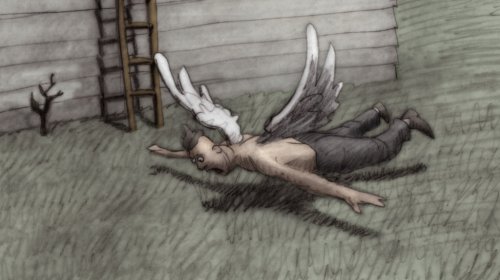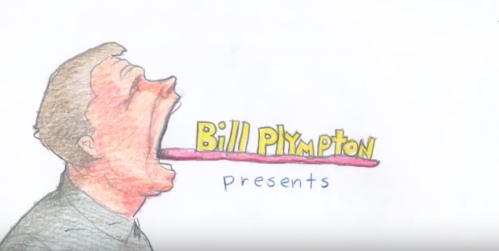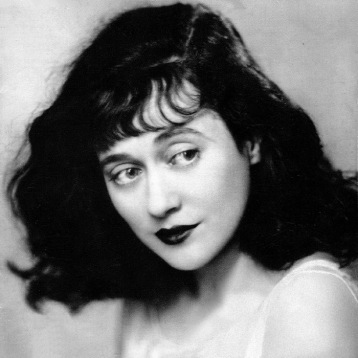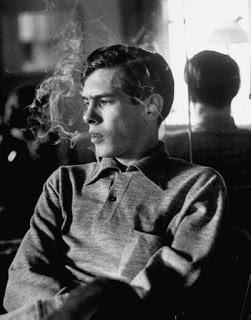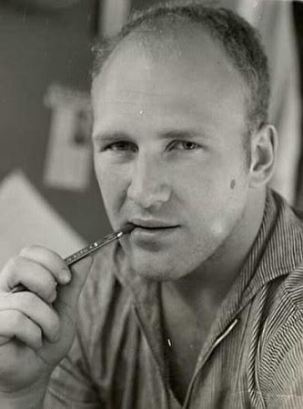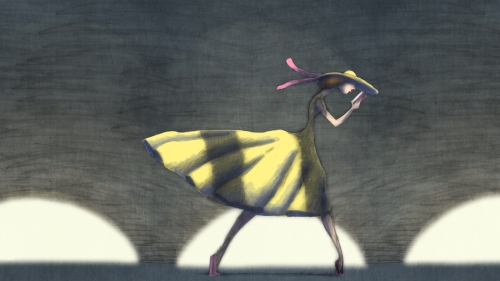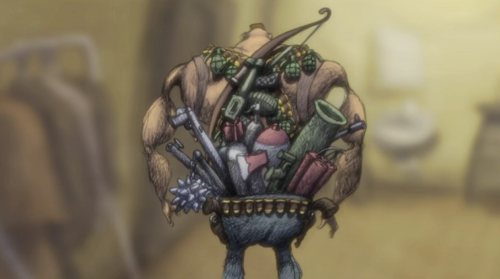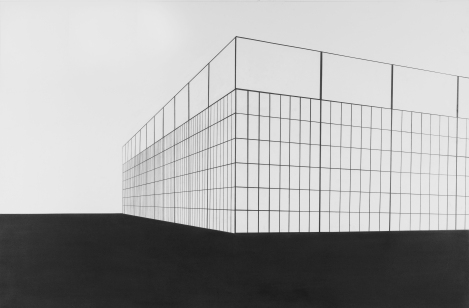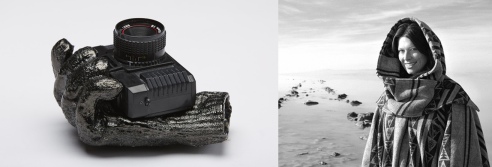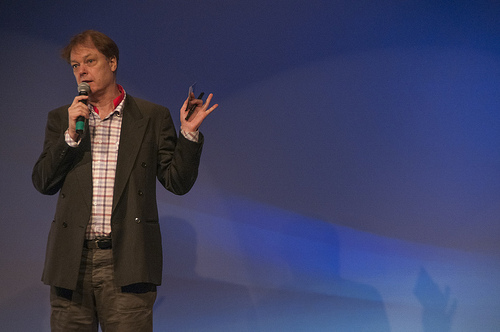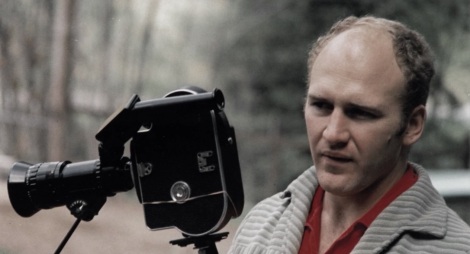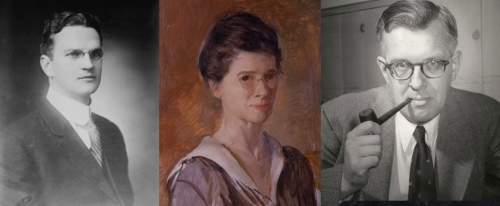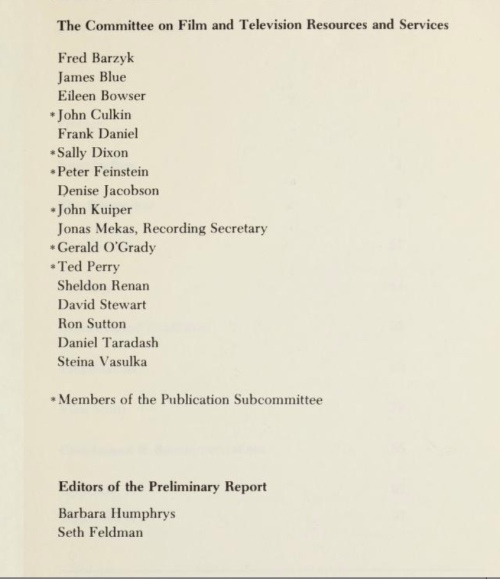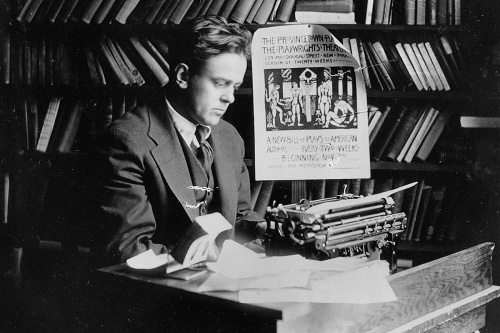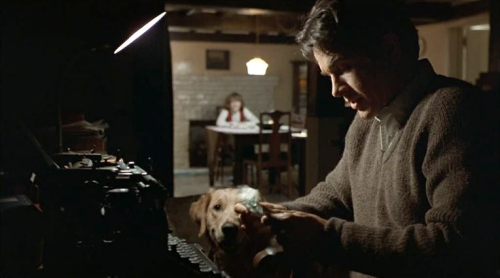
In the above photo, Dennis sits inside his Lighthouse Cinema, located on Suffolk in Manhattan’s Lower East Side.
When Dennis and I started Oregon Cartoon Institute in 2007, our first official event was housed in Disjecta, and ran for three weeks.
Dennis Nyback’s Cartoon Extravaganza included American animation from Emil Cohl, Winsor McCay, John Randolph Bray, Otto Messmer, Max Fleischer, early silent Disney, Paul Terry, Walter Lantz, Ub Iwerks, Amadee Van Beuren, Rudolf Ising, Ted Eshbaugh, Theodore Geisel (aka Dr. Seuss), Chuck Jones, Tex Avery, George Pal, Ladislaw Starevitch, Paramount, Famous Studios, HarveyToons, Warner Brothers, Columbia, UPA, as well as foreign animation, animated educational films, puppet animation, animated Industrial films, animated television commercials, and avant garde animation.
All films from Dennis’ collection.
All on 16mm.
Here’s the program notes of with Dennis’ introductions. Titles which feature contributions by Oregon artists are in italics.
Friday February 23, 2007
Day 1: Animation From Zoetrope to Sound
Starting with a short look at the history of animation as presented in a short subject Disney documentary from 1955 (print begins after the missing title sequence), then works by the very first artists to work in the field of animation.
Untitled educational film on the history of animation (1955) Disney
Fantasmagorie (1908) Emil Cohl France
Gertie the Dinosaur (1914) Winsor McCay
Colonel Heeza Liar in the African Jungles (1923) John Randolph Bray
Charley at the Beach (1919) Pat Sullivan Otto Messmer Nestor Film Co.
Modeling (1921) Max Fleischer
Puss in Boots (1922) Walt Disney, Kansas City Laugh-O-Gram Films
Seeing Things Mutt and Jeff (1919) Bud Fisher
Krazy Kat and Ignatz Mouse: A Duet, He Made Me Love Him (1916) Frank Moser, Leon Searl, writer George Herriman
Dennis’ notes: The program will end with another film that Nyback has the only known print of. It is Monsieur Slim starring Joe Morgan as Andy Gump. It has not been determined what the original American title of this film is. This a French print purchased at a sidewalk sale in Paris in 1999 with French inter-titles. It concerns an auto race in which the Gump family enters their mobile home which is a shack built on a truck chassis. It is hilarious and is mostly live action but uses animation in a key scene. Andy Gump was a very popular comic strip in the twenties and has been cited as a favorite of R. Crumb.
Monsieur Slim c1927 Joe Morgan as Andy Gump.
All films on 16mm. All from his collection.
==========================================================
Saturday February 24, 2007
Day 2: The Mouse that Roared
Ten early Disney cartoons in black and white. The beginning of the company that soon dominated the animation industry. See the development from crude to sophisticated animation from the first days of the company.
Alice Rattled by Rats (1925)
Steamboat Willie (1928)
Mickey and Gold Rush (1932) AKA The Klondike Kid
Touchdown Mickey (1932) aka All American Mickey
The Steeple Chase (1933) aka Mickey’s Trick Horse
Mickey Saves the Mail (1933) AKA The Mail Pilot
Mickey’s Man Friday (1935) aka Robinson Crusoe Mickey
Camping Out (1934) aka MM Exciting Picnic
Mickey and Liliputians (1934) AKA Gulliver Mickey
Movie Star Mickey (1933) AKA Mickey’s Gala Premiere
All films on 16mm. All from his collection.
============================================================
Sunday February 25, 2007
Day 3: The Early Work of Paul Terry, Walter Lantz, Otto Messmer and Ub Iwerks.
Ub Iwerks met Walt Disney in Kansas City and was Walt’s first employee. He was a brilliant animator and created Mickey Mouse. He left Disney to form his own cartoon studio in 1930. Paul Terry was born in San Mateo and animated his first cartoon in 1915. His company churned out cartoons for the next fifty years. Walter Lantz was a pioneer (worked on Bray’s Col Heeza Liar in 1916) who established his own studio and produced scads of cartoons. Otto Messmer created Felix the Cat in the teens.
Fiddlesticks (1931) Ub Iwerks Character: Flip the Frog, music by Carl Stalling
Techno-cracked, Ub Iwerks, animator Shamus Culhane, music by Carl Stalling
Play Ball (1933) Ub Iwerks Character: Willie Whopper, Music by Carl Stalling
The Black Duck (1929) Paul Terry
Eliza On the Ice (1944) Paul Terry Producer, Connie Rasinski Director
Andy Panda’s Pop (1941) Walter Lantz
Fish Fry (1944) Andy Panda Walter Lantz
Hollywood Matador (1942) Walter Lantz, Mel Blanc, Woody Woodpecker
The Coo Coo Bird (1947) Walter Lantz, Dick Lundy, voices Mel Blanc, Bugs Hardaway
Felix In Fairyland (1923) Otto Messmer
Felix Woos Whoopee (1928) Otto Messmer
All films on 16mm. All from his collection.
=========================================================
Monday February 26, 2007
Day 4: The Birth of Betty Boop or My Life as a Dog
The program begins with the 1933 cartoon Is My Palm Red, which purports to tell the true story of Betty Boops baby days and forward. It is followed by the first Betty Boop cartoon Dizzy Dishes. Then, nine more, all made before Betty became human. Betty first appeared as the love interest of Bimbo. Bimbo was a dog. Betty was too. See her change, not just in and out of her clothes, but into another species. Produced by Max Fleischer. Directed by Dave Fleischer.
Is My Palm Red (1933)
Dizzy Dishes (1930)
Mysterious Mose (1931)
Any Little Girl Who’s a Nice Little Girl (1931)
The Herring Murder Case (1931)
Bimbo’s Initiation (1931)
Kitty From Kansas City (1931) With Rudy Vallee
Mask-A-Raid (1931)
Dizzy Red Riding Hood (1931)
Any Rags (1932)
All films on 16mm. All from his collection.
====================================================
Tuesday February 27, 2007
Day 5: The Forgotten Greatness of Amadee Van Beuren
Some of the best cartoons of the thirties were made by the fabled studio of Amadee Van Beuren. Mr. Van Beuren fell into poor health and produced no cartoons after 1936. His cartoon studio then folded. He died in 1938.
A Toytown Tale (1931)
Butterflies featuring Molly Moo Cow (1935)
Molly Moo Cow and Robinson Crusoe (1935)
Rasslin Match (1934) featuring Amos and Andy
Parrotville Old Folks (1935)
Piano Tuners (1932)
Pastrytown Wedding (1934) Ted Eshbaugh
Happy Hoboes (1933)
The Sunshine Makers (1935) Ted Eshbaugh
Cap’n Cub (1945) Post Van Beuren work by the enigmatic Ted Eshbaugh who earlier did The Sunshine Makers and others.
All films on 16mm. All from his collection.
=================================================
Wednesday February 28, 2007
Day 6: The Amazing Ladislaw Starevitch.
Starevitch produced his first stop motion cartoon Lucanus Cervus in 1910.That puts him before Winsor McCay in the history of animators and only Emil Cohl before him. Nyback considers him the greatest animator who ever lived and is not alone in that assessment. His work has influenced Jan Svankmajer, The Quay Brothers, and many other animators. Toy Story was a remake of his greatest work The Mascot. His work from 1914 to 1933 will be in the show.
The Mascot (1933) Original title Le Fetiche
Love in Black and White (1928) Original title Amour noir et amour blanc
The Song of the Nightingale (1925) Original title La voix du rossignol
The Frogs Who Wanted a King (1922) Original title Les grenouilles qui demandent un roi
The Cameraman’s Revenge (1912) Original title Mest kinematograficheskogo operatora
All films on 16mm. All from his collection.
===================================================
Thursday March 1, 2007
Day 7: Warner Brothers Part One: The Harman and Ising Era
It should be noted that WB cartoons were distributed by Warner Brothers, but they were independently produced by Leon Schlesinger. From the beginning into 1945. Everyone knows the great WB cartoon characters Bugs, Daffy, Porky, Road Runner, Yosemite Sam, and the rest. The first of those to appear was Porky Pig in 1935. Warner Bros. animation started in 1929 under the control of Hugh Harman and Rudolf Ising. They left WB for MGM in 1934. Here are ten great cartoons from the Harman Ising era at WB.
One More Time (1931)
Freddy the Freshman (1932)
I Like Mountain Music (1933)
We’re In the Money (1933)
Wake Up the Gypsy In Me (1933)
Buddy’s Showboat (1933)
Buddy the Gob (1934)
Bosko in Person (1933)
Shake Your Powder Puff (1934)
Honeymoon Hotel (1934) Cinecolor
Dennis’ notes: All of these cartoons are from the “pre-code” Hollywood era. It shows.
All films on 16mm. All from his collection.
================================================
Friday March 2, 2007
Day 8: Warner Brothers Part Two: The introduction of Bugs, Daffy, Porky and the rest.
Cartoons characters change over time. Here we see some of the all time greats in their earliest forms. You’ll be shocked to see how fat Porky Pig was in the beginning. You’ll be amazed at just how Daffy Daffy Duck was. Bugs Bunny was really a jerk. You’ll see the first Tweetie Pie cartoon where he is really sadistic and not the “cute”character seen currently on pre-teens backpacks. A nice look at these characters before their sharp corners were rounded off.
Porky’s Pet (1935) Porky Pig
Porky’s Duck Hunt (1937) Daffy Duck
Porky in Wackyland (1938) Porky Pig
A Wild Hare (1940) Bugs Bunny
A Tale of Two Kitties (1942) Tweetie Pie
Bugs Bunny Nips the Nips (1944) Bugs Bunny
Russian Rhapsody (1944) Gremlins
Southern Fried Rabbit (1953) Yosemite Sam
There They Go Go Go (1956) Road Runner
All films on 16mm. All from his collection.
==================================================
Saturday March 3, 2007
Day 9: Mel Blanc, Man Of A 1000 Voices
Clink Clink Another Drink Soundie with Mel performing with Spike Jones & His City Slickers
The Screw Driver (1941) Woody Woodpecker
Home Front (1943) Private SNAFU
Porky’s Movie Mystery (1939)
Sheepish Wolf (1942)
Wise Quackers (1949)
A Hick, A Slick and a Chick (1948)
Daffy Doodles (1946)
Banty Raids (1963)
Cocoa Pebbles Ad c1963
Tin Pan Alley Cats (1943)
Mel Blanc excerpt, in 1943 Army/Navy Screen Magazine
All films on 16mm. All from his collection.
=======================================================
Sunday March 4, 2007
Day 10: Cartoonists and Animators Go to War
From WWI, we will see Winsor McCay’s spectacular The Sinking of the Lusitania. From WW II we will see Ted Geisel (aka Dr. Suess) military training toons, Popeye battling the Japanese, Chuck Jones’ pacifist Draft Horse, Superman fighting for the American way, Joseph Stalin the Godless Commie on our side, and much more. This is not really program for children.
Sinking of the Lusitania Winsor McCay (1919)
Tokio Jokio (1943) Norman McCabe, Warner Bros.
Education For Death (1943) Disney
The Draft Horse (1942) Chuck Jones Warner Bros.
Spies Private (1943) Pvt. Snafu
You’re a Sap Mr. Jap (1942) Popeye Max Fleischer
The Japoteurs (1942) Superman Max Fleischer
Rumors Private Snafu (1944)
Bugs Nips the Nips (1944) Bugs Bunny Warner Bros.
Russian Rhapsody 1944 Warner Bros.
Der Fuhrer’s Face (1942) Disney
All films on 16mm. All from his collection.
===============================================
Monday March 5, 2007
Day 11: World Animation
Mr. Nyback is very happy to at last be able to show some rarities he has collected from his travels around the world showing films. Many of these cartoons were given as gifts in foreign lands. They will include Czech, Hungarian, Australian, Japanese, French, Dutch, Polish, and other world animation.
Barktakiada (1985) Oldrich Habere Kratky Film Praha Czech
Hat on Flier (1986) Zagreb Film
Red and Black
Variations on Theme no date Budapest Anti-War
Sword (1968) Czech
Story of the Southern Cross (1969) Thelma Dufton, Concept Films Australia
The Jump (1965) Eino Ruutsalo Music by Henrik Otto Donner Finland
A-1 Love (1965) Yoji Kuri Japan
The Daisy (1965) Todor Dinov Bulgaria
Lakat Kao Takev (1959) Zagreb Film
All films on 16mm. All from his collection.
=================================================
Tuesday March 6, 2007
Day 12: There is Nobody Like Tex Avery
This program will have the best of Tex, both at Warners in the 30’s and at MGM in the 40’s.
Homesteader Droopy (1954)
Drag Along Droopy (1954)
Bad Luck Blackie (1949)
Uncle Tom’s Cabana (1947) MGM
Red Hot Riding Hood (1943) MGM
Thugs with Dirty Mugs (1939)
Hamateur Night (1939)
Mice Will Play (1938)
Screwball Squirrel (1944) MGM
A Sunbonnet Blue (1937) WB
Don’t Look Now (1936) WB
I Love to Singa (1936) WB
All films on 16mm. All from his collection.
=====================================================
Wednesday March 7, 2007
Day 13: Sixties Animation
Most of this will be television animation.
Matty’s Funnies, Lost Wages episode, (1962) Bob Clampett, Beany and Cecil
Rocky and Bullwinkle Upsy-Daisyism (1961)
Roger Ramjet (1965)
The Mighty Heroes (1966) Ralph Bakshi
Rosie the Robot (1962) The Jetsons (Pilot episode)
Rock of Rockzilla (1962) Flintstones
Pigeon in a Plum Tree (1962) Gumby
Sesame Street (1969) First season
All films on 16mm. All from his collection.
====================================================
Thursday March 8, 2007
Day 14: Comic Books Come Alive: Superman, Little Lulu, Beatle Bailey, Mighty Mouse, others.
The Bulleteers (1942) Superman Dave Fleischer
Mechanical Monsters (1941) Superman Dave Fleischer
Lulu’s Indoor Outing (1942) Manny Sparber, Little Lulu, Jug Haid’s Jumping Frog
Home Sweet Swampy (1962) Al Brodax, Snuffy Smith
Jug Haid’s Jumping Frog (1962) Snuffy Smith
Goonland (1938) Popeye, Dave Fleischer
Sultan Pepper (1934) Oscar Soglow, The Little King
Railroad Rhythm (1937) Krazy Kat
Friday
All films on 16mm. All from his collection.
==================================================
March 9, 2007
Day 15: Educational Animation
Here is some really rare and interesting stuff, animation not intended for theatrical release but for the school systems as educationals.
The Glob Family no information
Emily, The Story of a Field Mouse c1972
The Story of Menstruation (1946) Disney
My Turtle Died Today (1964) Bailey Film
About Conception and Contraception (1973) National Film Board Canada
ABC of Health Great Britain c1940
All films on 16mm. All from his collection.
====================================================
Saturday March 10, 2007
Day 16: Pinto Colvig and other Oregon Animators.
Pinto Colvig was born in Jacksonville, Oregon in 1892. He first worked as a newspaper cartoonist and then became an animator. Working at Disney in the early thirties he began doing voice work. He was the longtime voice of Goofy. He also did some voice work for Warners and was the voice of Bluto in Famous Studios Popeye cartoons. This show will feature his work at Disney, Warners, and Famous. Carl Barks was born in Merrill, Oregon in 1901. He worked at Disney animating Donald Duck and then, by himself, created Scrooge McDuck. We will show one of his Donald Duck cartoons. Most Portlanders know that Matt Groening is from here. What most of them don’t know is that in high school he worked with local teenage film maker Tim Smith on several films. One of the best, which includes animation, is Drugs: Killers or Dillers, which will lead off the show.
Drugs: Killers or Dillers (1972) Tim Smith & Matt Groening
Hobo Gadget Band (1939) WB Pinto Colvig
Klondike Kid (1932)
Mickey’s Mellerdramer (1933) aka Mickey and Simon Legree
Pluto’s Judgement Day (1935) Disney Pinto Colvig (voice) Carl Barks (animation)
I Like Mountain Music (1933) WB Pinto Colvig
Popeye Presents Eugene the Jeep (1941) Pinto Colvig
The Whoopee Party (1932) Pinto Colvig
All films on 16mm. All from his collection.
=======================================================
Sunday March 11, 2007
Day 17: World Puppet Animation
Mobilier Fidele (Autmatic Moving Co.) 1910 Emil Cohl France
The Problem (1964) Prague Czech Jan Dudesek
Phillips Broadcast (1938) George Pal Netherlands
Puss in Boots (1940) Germany Ferdinand Paul, Hermann Diehl
Jack and Beanstalk (1956) Germany Lotte Reiniger
It’s A Bird (1930) Charley Bowers USA
Poison in the House (1957) Basil Miovsorff, born Siberia, USA
All films on 16mm. All from his collection.
=====================================================
Monday March 12, 2007
Day 18: Industrial Animation
Industrial films are among the least seen films by the average person. They were generally only seen by those in the industries they covered, sort infomercials for a much smaller market. Animated industrial films are smaller group. Here are some pips! Doomsday for Pests was made by the Sherwin Williams paint company to promote the latest product of 1953: Paint mixed with DDT to keep bugs at bay. The great animation was by the Jerry Fairbanks company. It uses both animation and live action to great effect. The UPA company was formed by animators who had been blacklisted for striking against Disney in the forties. They produced the wonderful Gerald McBoing Boing cartoons and also Mr. Magoo. Their bread and butter was animated commercials and industrial films. Of great topical interest today is their Man On the Land paid for by the oil industry in 1957 which you will see is a beautiful Technicolor print. Mr. Nyback is not sure who made Happy Little Blue Bird Valley. It was obviously funded by hydroelectric power money. It shows the little blue bird and other animals of the forest who are so happy because a dam is being built. Truly bizarre! Others.
Man on the Land (1951) UPA
Doomsday for Pests (1953) Jerry Fairbanks Productions
Happy Little Bluebird Valley c1962
All films on 16mm. All from his collection.
==================================================================
Tuesday March 13, 2007
Day 19: Animated TV Commercials (50’s through 80’s)
Intertitle: Junk Food The All American Meal
Burger King Lion and son in the jungle fully animated 1970s
Zero Bar candy fully animated 1970s
7-UP See the Light! Fabulous psychedelic vaudeville 1975
Pepsi CLIO award winner 1989 Funk Music fully animated
Adams Gum Fully animated Weird flavors 1970s
MacDonalds Ronald MacDonald with puppets back to the stone age 1970s
Funny Bone Candy Bar 1960’s b Live action kids and animated candy bar B&W
Little Caesar Pizza CLIO award Origami ad 1989
Intertitle: You Gotta Have A Gimmick To Sell This Stuff
Brick Makers CLIO award 1989 Judo
Flair Pens 1960s color Stop Motion
Social Security PSA 1970s live action with partial animation
Levis With Dacron Polyester 1977 Plaid Levis Ken Nordine voice Not on youtube
Princess Telephone 1964 Stop Motion B&W
Silverstone Teflon frying pan Hang on Sloopy! CLIO 1988
Baggies Alligator Live action with cast from Family Affair partial animation 1960s
Intertitle: Moral Crusade Public Service Advertisements
National Safety Council Roadrunner Wiley Coyote and Shamu Fully animated 1960s
Basic Education Grants Platform shoes talk to each over 1960s fully animated
California Dental Association Tarzan, dental care, fully animated 1970s
EPA Use Pesticides Carefully 1970s Puppets
FDA Eat Sensibly 1970s Puppets
Woodsman spares tree Seasons Greetings R.O. Blechman fully animated 1969
Intertitle: Hook’em Young The Fine Art of Exploiting Children
Peter Pan Peanut Butter with Tinker Bell Live action and animation 1958
Ding Dongs King Ding Dong Fully animated 1970’s
Sippity Doo Dah 1970s Some sort of chocolate milk Live action and animation
Kool Aid 1970s Hey Kool Aid Bowling Alley puppet
Twinkies Live and stop motion “Even space girls like Twinkies.” Weird 1970s
Nestles Quik Famous live action and animated Bunny 1970s
Pet Instant Milk 1962 Live and stop motion child star Ron Howard B&W
Crazy Foam 1960s color bathtub toy dispensers Live action and animation
Jif Peanut Butter 1950s B&W Live action and some stop motion
Top Cat Ad for the tv show Fully animated 1961
Hunts Snack Pack 1960s Talking horse
Bugs Bunny Show 5 second spot fully animated
Kool Aid Kids from Holland Fully animated B&W 1960s
Yoplait CLIO award 1989 Spanish strong children
Intertitle: Damn the Ozone Hair is Important
Blondes American Style 1960s Color Live and stop motion.
Vitalis Men’s hair care 1957 Animation and live action
Datsun B-210 We are Driven! 1974 animated logo
Union 76 “long hose” shot in SF. Not animated, but some manipulation 1960s B&W
Chevron Live action and animated B&W 1960s
Intertitle: Feminine Allure
Hour after Hour Deodorant 1970 With Diane Keaton animated logo
Tussee Lipstick 1960s Live action and interesting animation B&W
Maybelline Moonstar False eyelashes 1960s B&W Fabulous! Manipulated live action
Coppertone “We own the sun” B&W Manipulated live action 1960s
Coty Excites 1950s Sexy ad Manipulated and stop motion animation B&W
Scope Mouthwash Woman confronts boss about bad breath 1960s B&W part animated
Intertitle: When Fun was Fun: Smoking and Drinking
Western Airlines Wally the bird “The Ooonly Way to Fly” 1959 fully animated
LA Beer CLIO Award 1988 Manipulated live and stop motion
Ice House Wine Cocktails Fully animated and very cool! 1970s
Marlboro Manipulated and live action. B&W 1960s
Salem Menthol Cigarettes B&W 1960s Take a puff, it’s Springtime! Animated logo
Colt 45 Malt Liquor CLIO award 1989 Partial animation
McEwans Best Scotch Clio Award 1988 Partial animation
Old Style Beer Fully animated 1950s B&W
Phillip Morris Cigarettes From I Love Lucy 1952 Animated logo With Bob Shepard
Intertitle: The Tao of Tide
Bold Laundry Detergent 1960s Better than Bright!
Wizard Air Refresher 1960s “Houseitosis”
All Detergent 1968 color Made funny by featuring Lily Tomlin Live and manipulated
Sani-Flush 1960s Good animated toilet!
Intertitle: Who Needs A Doctor When You Have TV
Ammons Powder 1960s color Fully animated
Dristan Nasal Mist 1960s B&W Cool “breathing bag” with animated sinuses.
Bactine Medicated 1960’s Cool and peppy jingle with dancing girl Live and animated
Anacin Classic B&W 1960s housewife and the end of her rope
Nervine Better housewife mood elevator “Avoid excessive use” Live and animated
Mentholatum Deep Heat Rub Live action with animated aching back
Compound W Young woman with warts! Animated wart action.
Chocks Vitamins puppet B&W 1950s
Bufferin Invisible men’s bodies show Bufferin at work Animation and manipulated
Intertitle: The New Joy of Cooking Food In a Box
One a Day Vitamins 1950s B&W creepy
Sunbeam Microwave CLIO award 1980s
Stroemann Bread Fully animated color 1960s
Jolly Green Giant Corn Partially animated 1960s color
Rice a Roni 1960s Cool Jazz and SF A great commercial with manipulated images
Pillsbury Angel Food 1950s Live and stop motion.
Shake and Bake 1970s Partial stop “time delay” motion
Wonder Bread Live and animation with The Fresh Guys 1970s
Florida Orange Juice Anita Bryant with animated “Orange Bird.” 1969 color
Pillsbury Flour with the Pillsbury animated Doughboy. Color 1960s
Pillsbury White Cake Live action, stop motion and manipulated images. B&W 1950s
Intertitle: Part Of A Balanced Breakfast
Instant Maxwell House 1960s Color with the Percolator Jingle Animated percolator
Awake Breakfast Drink Sexy dialogue between fresh and squeezed. Full animation
Quaker Puffed Rice “Shot from Guns!” B&W 1950s
Start Breakfast Drink With animated Popeye 1970s
Rice Krispies 1970s Full animation
Cocoa Puffs 1960s B&W The first Cuckoo For Cocoa Puffs animated ad
Fruit Loops 1960s B&W Oop Fray, Oops Lay! Full animation
Kellogs Frosted Flakes 1960s color Tony the Tiger “Live it Up” full animation
Corn Flakes with Live action and animated “Cornelius” by Andy Devine color 60s
Post Super Sugar Crisp Sugar Bear 1970s full animation
Alpha-Bits 1973 With Michael Jackson and the Jackson Five Manipulated images
Honeycomb 1970s Puppet Abominable Snowman
Trix 1970s The Silly Rabbit does get a bite fully animated
Sunkist Oranges 1970s Animated little girl and dragon
Intertitle: 9 Out of 10 Dentists Agree Sex Sells
Stripe Toothpaste 1960s B&W Little sister bugs older sister about sex. brief animation
Score 1970s Hairspray for men This is right to the point See animation plump things up
Maiden Form Rated “X” Bra 1971 Color Manipulated images
Paper-mate Pens 1957 Nice phallic symbol usage Live action and animation
Doral Cigarettes 1970s Phallic symbol animated images with confused woman
Certs Breath Mints 1960s color the classic “If he kissed you once….” Animated logo
Fresca 1960s color Manipulated images and women in swim suits
Intertitle: Riding the Gravy Train All the Way to the Bank
Ken-L-Ration Tender Chunks Animated dog barking and logo Woof! 1970s
Friskies Kitten Formula CLIO award 1980s Live and stop motion
Farmers and Mechanics Bank 1950s Manipulated images including Great Dane
Hartz Mountain Flea Collar Puppets 1970s
Chuck Wagon 1971 Famous dog and miniature stage coach
Purina Cat Chow 1970s Chow Chow Chow!
All films on 16mm. All from his collection.
=======================================================
Wednesday March 14, 2007
Day 20: 70’s Animation
Trust Mr. Nyback to not just show Groovy Ghoulies and Friends in this show, although they will be in it.
Charles Darwin/Evolution 1972
Wonderful World of Professor Kitzel Shamus Culhane
The Ghost in the Shed (1980) Sam Weiss Churchill Films
Overture 2012 (1976) Milan Blažeković Zagreb Film Croatia
Groovy Ghoulies and Friends
All films on 16mm. All from his collection.
==========================================================
Thursday March 15, 2007 –
Day 21: 35mm Animation from the fifties into the nineties
Oregon animators in italics.
T.V. Of Tomorrow (1953) Tex Avery
Bambi Meets Godzilla (1969) Marv Newland
Thank You, Mask Man (1971) John Hale
Closed Mondays (1974) Will Vinton & Bob Gardiner, loaned by Vinton.
Dimensions of Dialogue (1983) Jan Svankmajer
Pink Komkommer (1991) Marv Newland
Screenplay (1993) Barry Purves
Pro and Con (1993) Joanna Priestley & Joan C. Gratz
Mona Lisa Descending a Staircase (1992) Joan C. Gratz
One of Those Days (1988) Bill Plympton
Insect Poetry (2002) Marilyn Zornado, loaned by Zornado.
Magda (2004) Chel White, loaned by White.
All films on 35mm. All from Dennis Nyback’s collection, except where noted.

Here’s more information about Dennis.
==========================================================
Founded in 2007 by Anne Richardson and Dennis Nyback, Oregon Cartoon Institute uses new media, archival film, research, networking, and cross disciplinary discussion to explore Oregon film, animation, and print cartooning history. It has no brick and mortar presence, and always works in partnership with organizations which do.




